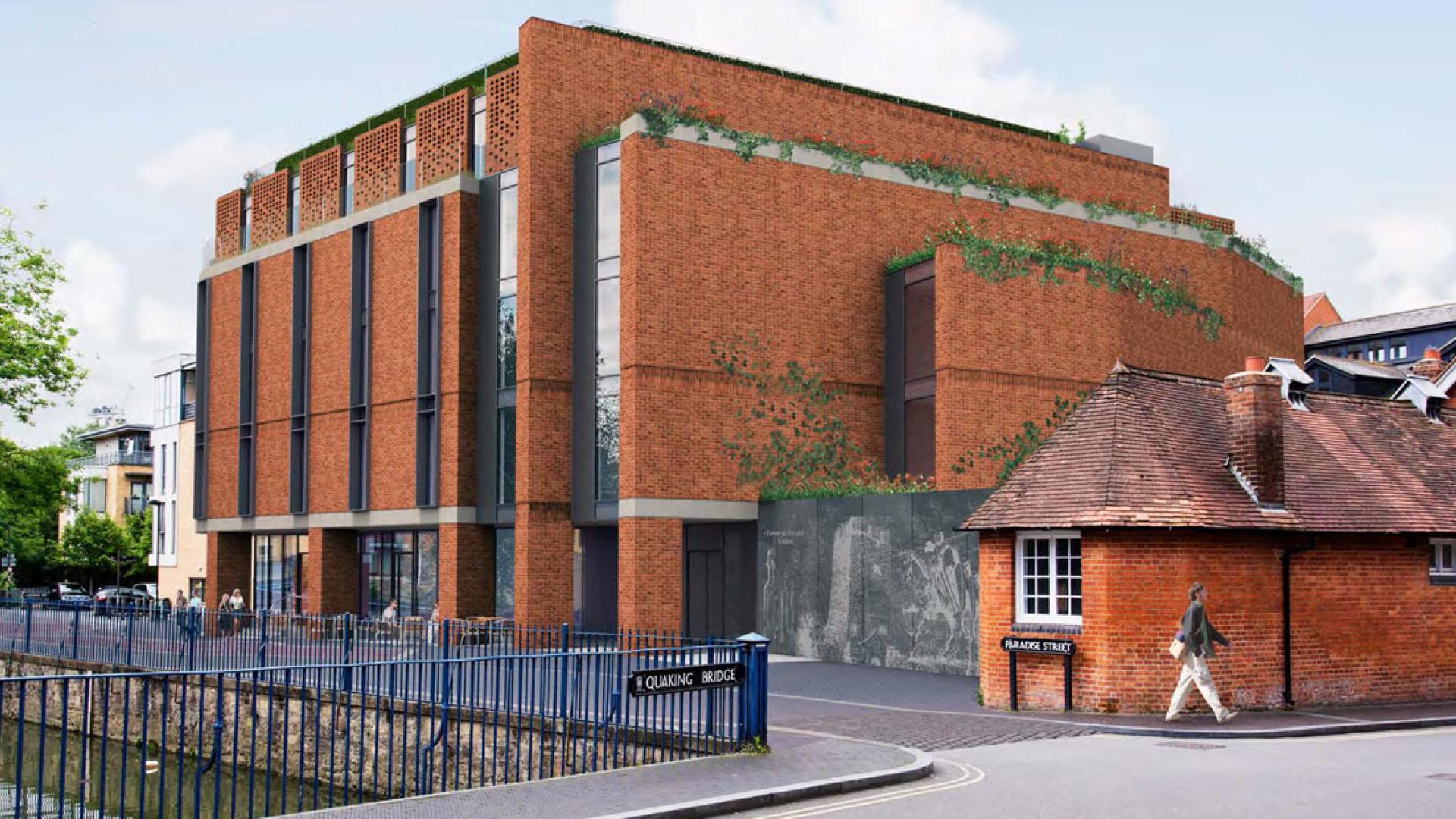Proposal:
Proposal number 24/00191/FUL. Erection of an extension to the existing top floor of the hotel to provide additional hotel bedrooms.
Courtyard by Marriott Oxford City Centre, 15 Paradise Street, Oxford
Our Response:
Oxford Preservation Trust (“OPT”) welcome the opportunity to view and submit comments on the above planning application.
OPT strongly object to the proposed development on the basis of the proposed extensions impact on views out of the city centre towards the western hills, most notably the views from St Georges Tower and the Castle Mound.
As you will be aware the application site is located in a highly sensitive site, sitting within the Central (University & City) Conservation Area and sitting immediately adjacent to a Grade I listed building (St George’s Tower) and a scheduled ancient monument (Castle Mound). St George’s Tower dates from the 11th century and is of exceptional national architectural and historical importance. It is a rare and exceptional structure nationally. The tower forms a significant landmark in the West End and was originally built as a ‘defensive’ tower, which provided views out across the city, providing long and uninterrupted views out towards the western hills that surround the city. The immediate setting is part of the building’s significance and maintaining the visual dominance of St George’s Tower over the immediate area and maintaining the long-distance views out of the city, from both the Tower and Castle Mound, is of significant importance.
OPT are aware of the site’s recent planning history, having submitted comments between 2015 to 2017 on a sequence of proposals that evolved over that time. The original 2015 application to build a hotel on the site was withdrawn after facing strong opposition including concerns over its overall massing, and amended plans were subsequently submitted in 2016 (16/02689/FUL). Following comments submitted by Historic England on this application, further changes were made to the application proposals, including changes to materials to improve its relationship with the surrounding highly sensitive heritage assets, and how the building would sit within views out from adjoining public vantage points.
Within their committee report (dated 26th April 2017) Officers discuss the use of green living walls and a green roof. They also discuss massing, and at paragraph 24 it states:
“In terms of massing this top floor positioned centrally, set back from the building edge and is a U-shape around the central courtyard core. Officers are satisfied that the living wall system proposed would have longevity and be managed properly.”
Whilst OPT still had concerns, it was welcoming to see that Officers had worked hard to encourage the applicants to break up the overall massing on the top floor, and supported the use of green roof and walls, to help mitigate the visual impact of the building on views from St Georges Tower and the Castle Mound. It now feels like the applicants, less than 5 years after the hotel opened, are trying to get permission for an extension to the hotel that would result in a building similar to that, which was considered unacceptable in 2015.
Policy DH2 within the adopted Local Plan states that;
“Any proposals within the Historic Core Area or View Cones that may impact on roofscape and the foreground part of views (including proposals where they are below the Carfax datum point, for example plant) should be designed carefully, and should meet all the following criteria:
• they are based on a clear understanding of characteristic positive aspects of roofscape in the area; and
• they contribute positively to the roofscape, to enhance any significant long views the development may be part of and also the experience at street level.”
OPT disagree with the visual assessment set out within the Heritage, Townscape and Visual Impact Assessment, especially with regard to the assessment of Viewpoint 6 – St Georges Tower and Viewpoint 8 – the Castle Mound and consider that the proposal will not make a positive contribution to the roofscape, nor enhance the long distance views from the two identified view points. The application is therefore contrary to Policy DH2.
With regard to views from St Georges Tower, as discussed above, the whole purpose of this Tower was as a defensive structure, which afforded clear views out towards the surrounding green hills around the City. The green roof and walls used on the existing building help to soften the appearance, and the broken up massing on the top floor level helps to assimilate the building into the mix of roofscapes that surround it.
Whilst the height of the existing building is not proposed to increase, the increase in massing, loss of green areas and the addition of solid elevations of materials and fenestration will draw the viewers eye towards this building, and away from the longer distance views beyond. OPT disagree with the conclusion in the Heritage, Townscape and Visual Impact Assessment, that the proposed changes will result in a “…moderate beneficial resultant effect” and instead believe that there will be significant harm to this highly sensitive view.
Again, OPT do not agree with the conclusions within the report regarding Viewpoint 8 from the Castle Mound. The increase in massing will harm this view and create a more dominant building that distracts from the wider view.
We would urge the planning officer to visit both Castle Mound and St Georges Tower prior to determining the application to ensure the significance of both these views are understood.
To conclude, OPT strongly object to this proposal on the basis of the proposed infill extension will have a harmful impact on views from both St Georges Tower and Castle Mound. As a Grade I listed building and a Scheduled Ancient Monument they should both be afforded the greatest protection, inline with guidance found within both national and local planning policy.
Outcome:
Application refused.

